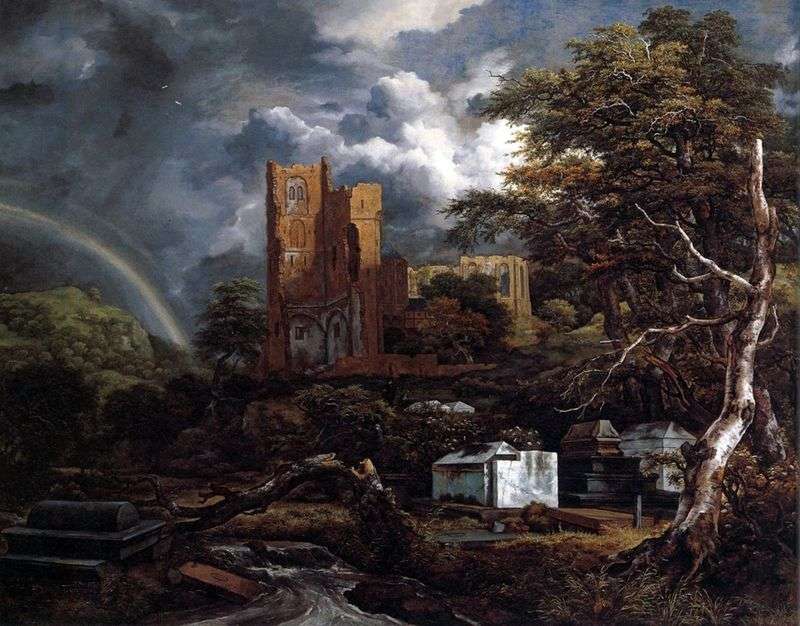
A distinctive feature of Reisdal’s mature creativity is the saturation of paintings with drama. His canvases are no longer just a contemplation of the surrounding world, like the canvases of his predecessors, but a search for dynamics, movement in everything. The law of constant renewal – this is what Reisdal wanted to reflect in his works, therefore he chose as an object for the image those moments in nature that most vividly demonstrate the process of intense inner life, the transition from one state to another. Hence, a certain elevation of the depicted object, the concentration of feeling on the canvas, as well as a certain gloominess, predetermination.
Similar motifs arose already in the early works of Reysdal, growing stronger as the artist evolved. Perhaps they were also predetermined by the most severe poetics of the northern nature. But despite this, paintings by Reysdal can not be called fully imbued with themes of death and inconstancy. Volatility itself can be considered as a hymn to life and unity of command.
However, in the legacy of Reisdal, there is still one work, where gloom and predetermination come to the fore. It is about the “Jewish cemetery”. The leading theme is the majestic silence of death and the unshakable law of changing one thing to another: changing autumn in winter, changing the day to night, changing the sunny weather to rainy, and finally changing human generations. But what is the winner in this constant variability, for what are all these metamorphoses? Should death be considered the final chord, or does life assert its priority? What is more important: the fleeting life of an individual or total immortality? These are the questions that Reisdal asks in the Jewish Cemetery, and he is unlikely to encourage the viewer to think in order to reveal some kind of truth revealed to him. The picture is the thoughts of the artist himself, it is not the promise of some idea, but only the thoughts of one person,
The idea of the mercilessness of death is reflected on the canvas in a dried-up tree trunk, the bare branches of which supposedly “stick” into the general landscape, and in the dilapidated walls of the building in the background. They are like embraces of the most bony old woman with a scythe. At the same time, these objects set some spatial framework in which Death rules. It is precisely between them that the tombs are located, and it was probably important for the artist that this “realm of the dead” does not occupy the entire canvas.
The motive of a conquering life is transmitted with no less force in the picture. The living tree rises almost in the center of this “kingdom”, the clouds float across the sky beyond, and a little stream flows out of the cemetery. Death itself gives rise to life, movement. And the skill of Reysdal was precisely in the fact that in ordinary details he could see the eternal laws, in the real landscape – the artistic image.
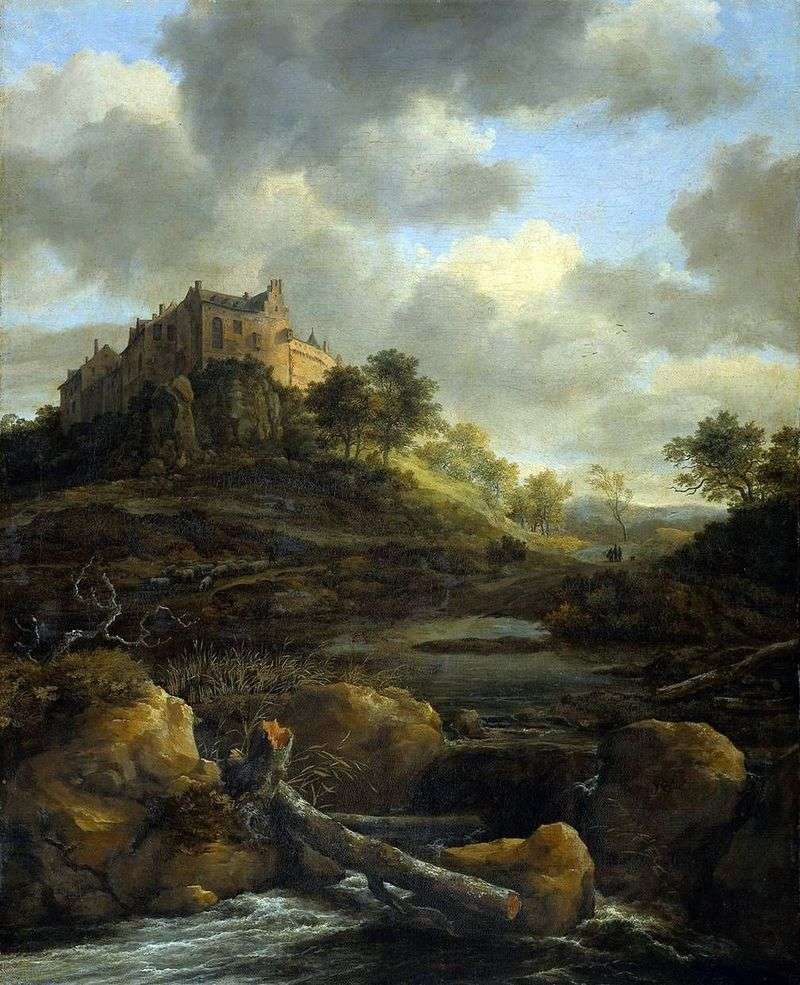 Bentheim Castle by Jacob van Ruisdal
Bentheim Castle by Jacob van Ruisdal Dune Road by Jacob van Ruisdal
Dune Road by Jacob van Ruisdal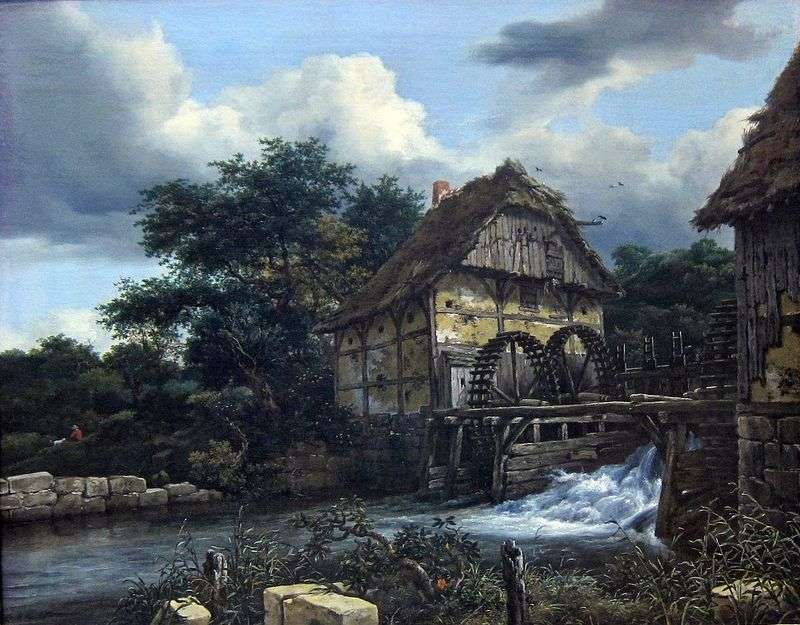 Two watermills by Jacob van Ruisdal
Two watermills by Jacob van Ruisdal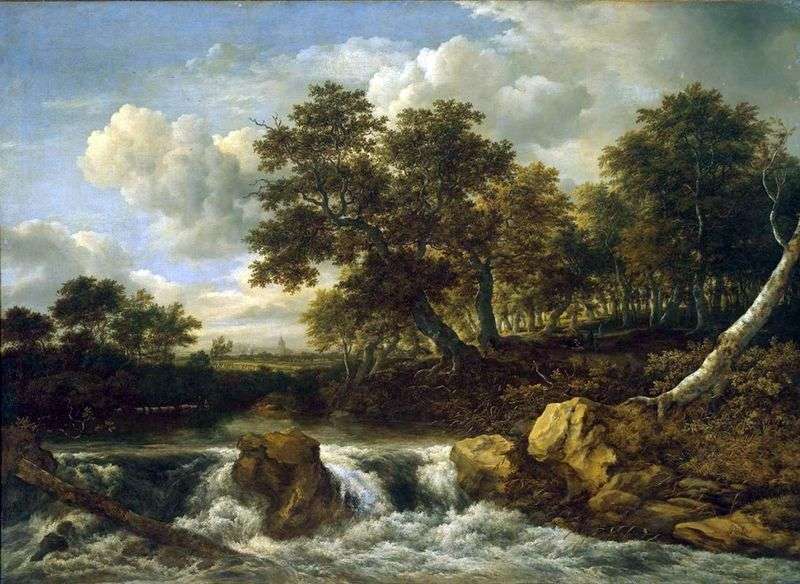 Landscape with a waterfall by Jacob van Ruisdal
Landscape with a waterfall by Jacob van Ruisdal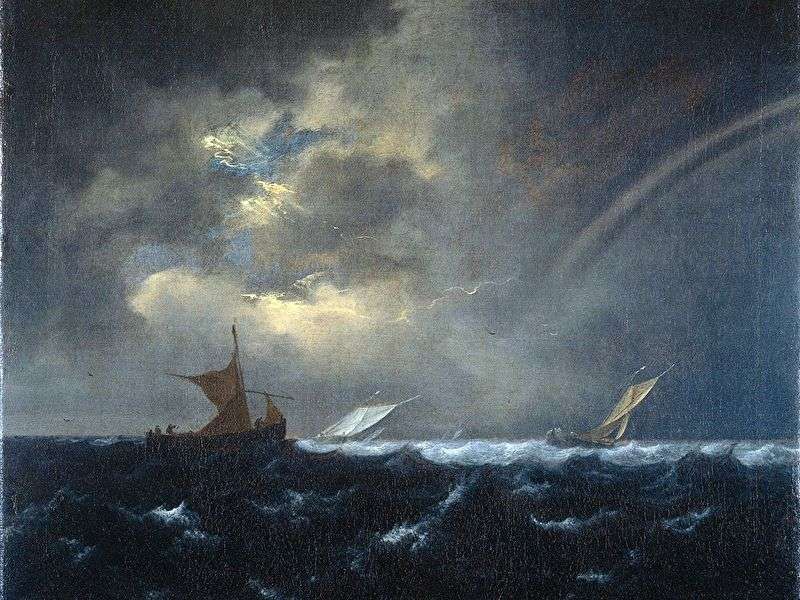 Rainbow in the stormy sea by Jacob van Ruisdal
Rainbow in the stormy sea by Jacob van Ruisdal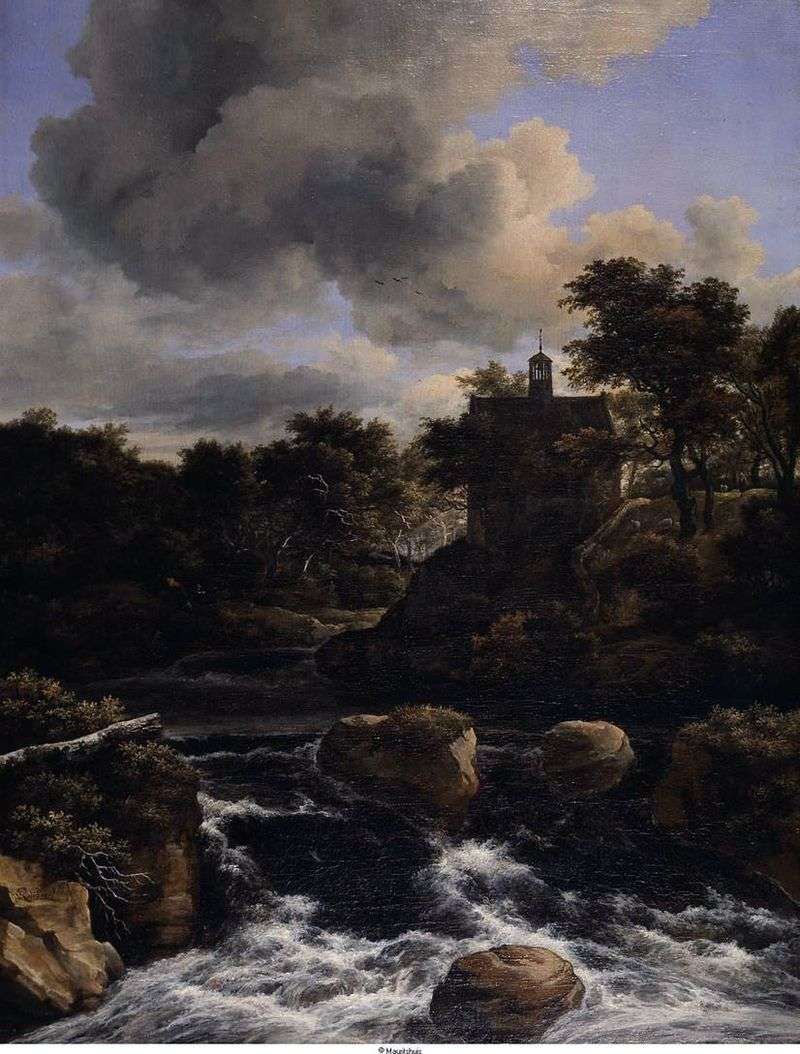 Waterfall in the forest by Jacob van Ruisdal
Waterfall in the forest by Jacob van Ruisdal Square in Amsterdam by Jacob van Ruisdal
Square in Amsterdam by Jacob van Ruisdal Waterfalls by Jacob van Ruisdal
Waterfalls by Jacob van Ruisdal